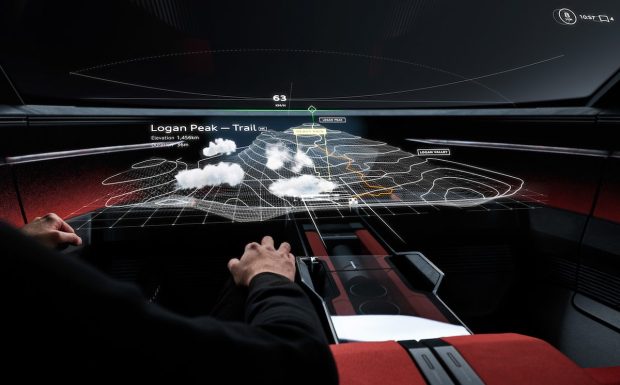Augmented Reality Helps German Automakers Drive Future of Connected Vehicles

The latest concept cars from BMW and Audi look to the future of in-car displays.
Concept cars have long been a way for vehicle makers to show off their most cutting-edge technologies and explore what the future of driving might look like.
Over the years, automakers have explored the use of augmented reality (AR) to enhance the driving experience, superimposing windshields with additional images and information, for example.
A new example is the concept car showcased by BMW at the 2023 CES tech show this year, which highlighted the different ways AR can be used to take the driving experience to the next level. From displaying basic information needed to drive like in existing head-up displays, the BMW iVision DEE progresses through five different degrees of mixed reality, the last of which the company depicts as a fully immersive virtual reality (VR) driving experience.
Another German carmaker, Audi, has taken a different approach to in-car AR which is enabled by a headset that is worn while driving.
Eliminating the physical dashboard entirely, the Audi Activesphere concept car brings AR inside the vehicle, with headset users able to see control panels and other virtual displays that remain hidden to the unaided observer.
In-Car AR Today
While BMW and Audi’s concept vehicles look to an all-electric future in which auto-drive is just a button push away, incremental improvements to AR technology present a more attainable vision of augmented driving today.
For example, Mercedes has integrated AR into the Ask Mercedes app, which identifies dashboard features and their functions when users view them through their smartphones.
Meanwhile, companies like the Swiss startup WayRay and U.K. holographic startup Envisics are developing the next generation of holographic head-up displays that massively extend the size and quality of what can be safely projected on a car’s windshield.
Between the two of them, Europe’s pioneering in-car holography specialists have raised over $150 million in venture capital funding and count the likes of Porsche, Hyundai and General Motors among their investors.
With the backing of several major auto manufacturers, Envisics announced plans for a major global expansion last year, citing rising demand for AR head-up display units.
Commenting on the growth of the company, Envisics founder and CEO Dr. Jamieson Christmas said the company is “extremely encouraged by the growing interest in AR [head-up displays] from the automakers in parallel with our own technological advances. Although many view holographic technology as something they remember from ‘Star Wars’ movies, we are on the threshold of widespread deployment across the industry.”
Christmas’ remarks point to the growing presence of AR in vehicles and a growing ubiquity that could see the technology adopted en masse within a few years.
The potential for AR to enhance the way people drive has barely been tapped, and use cases have only scratched the surface. With over-the-air software updates now able to upgrade millions of vehicles automatically, AR presents one more opportunity for auto brands to innovate continuously and push the technology forward.
For all PYMNTS EMEA coverage, subscribe to the daily EMEA Newsletter.